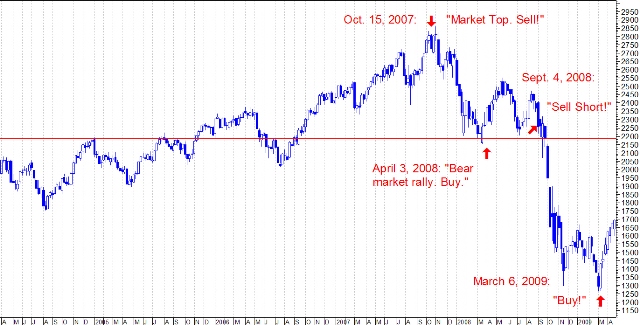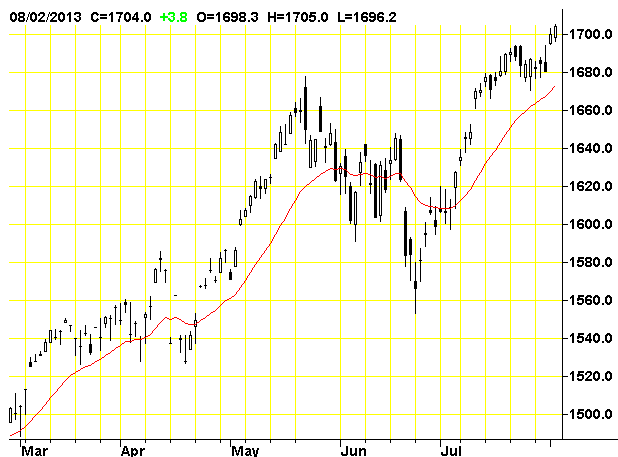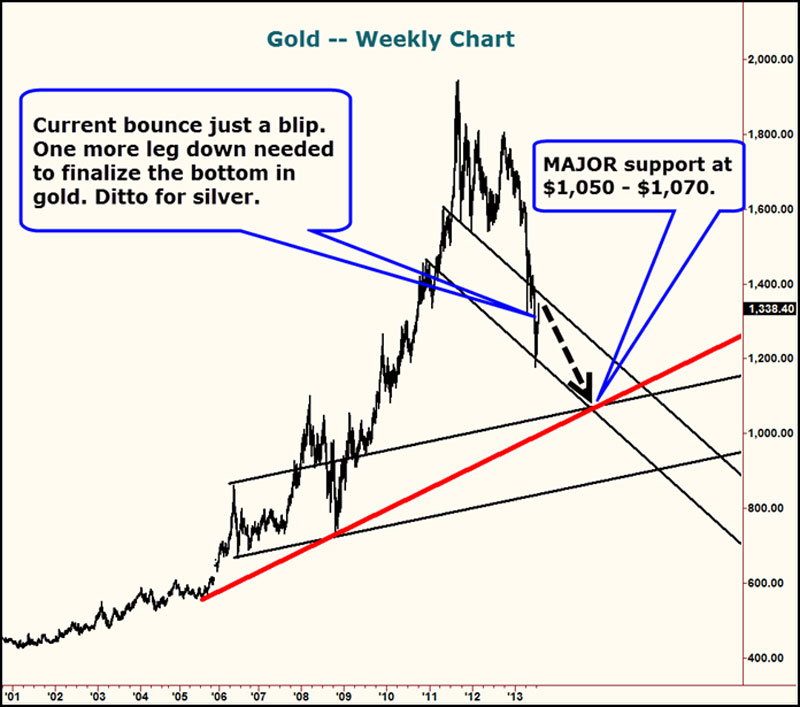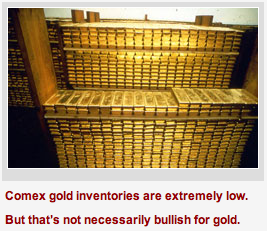Timing & trends
Produced by McIver Wealth Management Consulting Group
Mark Jasayko, CFA,MBA, Portfolio Manager with McIver Wealth Management of Richardson GMP in Vancouver.

 ….Worse Than 2007.
….Worse Than 2007.
This predicition is coming from the man who successfully predicted the huge 54% 17 month Crash of 2008 when the Dow fell from its its peak of 14164 on October 9, 2007 to 6469 on March 6, 2009.
Click on image for larger view
Schiff: We’re Heading For A Crisis Worse Than 2007
Washington is engaged in a massive “campaign” to make Americans believe the economy is in recovery. But in reality the United States is at the brink of a devastating economic crash that will cause catastrophic market losses and impoverish millions.
Peter, the best-selling author and CEO of Euro Pacific Capital delivered this frightening warning to investors in a recent interview on CCTV.
“The problem with politicians is they don’t want to level with the voters and tell them how bad the economy really is and what the cure for the disease is,” Schiff said.
Click to view a larger image
The “disease” Schiff refers to is a toxic combination of our massive $16.4 trillion debt and the Fed’s continued devaluing of the dollar through its controversial 7-year long “easing” program.
The Fed is currently purchasing $85 billion a month in Treasury and mortgage bonds, a form of stimulus.
President Obama and like-minded politicians claim this stimulus has pushed the economy forward, boosting GDP and keeping inflation low.
But Schiff says “it’s another lie.”
In fact, according to Schiff, the government has done nothing more than create a “phony” economy that is “completely dependent on the ability to borrow more money that we can’t pay back.”
“The Fed knows that the U.S. economy is not recovering,” Schiff said. “It simply is being kept from collapse by artificially low interest rates and quantitative easing. As that support goes, the economy will implode.”
“The crisis is imminent,” Schiff said. “I don’t think Obama is going to finish his second term without the bottom dropping out. And stock market investors are oblivious to the problems.”
Schiff charged Washington with cooking the books on its latest GDP and inflation figures.
He cites the government’s recent move to raise GDP 3% by including items never calculated before and that “no other country on the planet counts.” These include such intangibles costs and royalties from books, magazines iTunes song and movies.
The Financial Times reported this strange maneuver as the “U.S. Economy’s “Hollywood Makeover.”
“That’s what the government does,” Schiff said. “Whenever they don’t like the results, they change the methodology for calculating those results.”
“Maybe some of our creditors will be dumb enough to believe the hype,” Schiff added.
“The fact is, Schiff said. “We’re broke. We owe trillions. Look at our budget deficit; look at the debt to GDP ratio, the unfunded liabilities. If we were in the Eurozone, they would kick us out.”
Schiff points out recent market gains, with the Dow topping 14,000 on its way to setting record highs, is yet another lie giving investors a false sense of security.
“It’s not that the stock market is gaining value… it’s that our money is losing value. And so if you have a debased currency… a devalued currency, the price of everything goes up. Stocks are no exception,” he said.
“I think we are heading for a worse economic crisis than we had in 2007,” Schiff said. “You’re going to have a collapse in the dollar…a huge spike in interest rates… and our whole economy, which is built on the foundation of cheap money, is going to topple when you pull the rug out from under it.”
In August 2006, when the Dow was hitting new highs nearly every day, Schiff said in an interview: “The United States is like the Titanic, and I’m here with the lifeboat trying to get people to leave the ship… I see a real financial crisis coming for the United States.”
Just over a year later, the meltdown that became the Great Recession began, just as Schiff predicted.
He also predicted the subprime mortgage bubble burst, nearly a year before the real estate market fully crashed.
His recent warnings, however, have been even more alarming. Will they also prove to be true?
In his most recent book, “The Real Crash” How to Save Yourself and Your Country“, Schiff writes that
when the “real crash” comes,” it will be worse than the Great Depression.
Unemployment will skyrocket, credit will dry up, and worse, the dollar will collapse completely, “wiping out all savings and sending consumer prices into the stratosphere.”
Schiff estimates this “cancer” could consume a trillion dollars from consumers this year.
“Today we’re the world’s greatest debtor nation. Companies, homeowners and banks are so highly leveraged, rising interest rates will be devastating.”
According to polls, the average American is indeed sensing danger. A recent survey found that 61% of Americans believe a catastrophe is looming – yet only 15% feel prepared for such a deeply troubling event.
Editor’s Note: As a service to Money Morning readers, we’ve arranged a way for you to get a copy of Peter Schiff’s new best-selling book, The Real Crash: How To Save Yourself And Your Country, for free, including shipping. The book shows in plain language exactly what economic dangers ordinary Americans face right now and how you can protect yourself. Please go here for your free copy.
Is Devastation The Ultimate Cure?
Despite its bleak outlook, Schiff’s book has become a real wake-up call for millions of readers.
While Schiff’s predictions can be grim, he also offers step-by-step solutions that average Americans can follow to protect their wealth, investments and savings.
According to Schiff, “the crash and what follows” can be beneficial. But only for those who understand beforehand what is happening and have time to prepare for the devastation.
“All we can do now is prepare for the crash,” Schiff said. “If we brace ourselves properly and control the impact, we will survive it.”


 We have officially entered into uncharted territory. As the markets continue to surge higher, as earnings falter, valuations have once again reached extremes. As my friend Doug Short recently penned:
We have officially entered into uncharted territory. As the markets continue to surge higher, as earnings falter, valuations have once again reached extremes. As my friend Doug Short recently penned:
“Essentially we are in ‘uncharted’ territory. Never in history have we had 20+ P/E10 ratios with yields at the current level, although as I type this, the 10-year yield is at 2.69%, which is 1.26% above its all-time low set in July of last year. The closest we ever came to this in US history was a seven-month period from October 1936 to April 1937. During that timeframe the 10-year yield averaged 2.67%. How did the market fare? The S&P Composite hit an interim high (based on monthly averages of daily closes) in February 1937. The index plunged 44.9% over the next 15 months.
If we look to the Dow daily closes during that period, the index hit an interim high on March 3, 1937 and fell 49.1% to an interim trough on March 31, 1938 — 13 months later.
What can we conclude? As I said above, we’re in ‘uncharted’ territory. Despite increasing references to near term tapering of QE, many analysts assume that continued Fed easing will keep yields in the basement for a prolonged period, thus continuing to promote a risk-on skew to investment strategies despite weak fundamentals.
On the other hand, we could see a negative market reaction to a growing sense that Fed intervention has its downside, especially if Treasury yields continue to rise despite FOMC policy. The recent trend and volatility in the Nikkei in the wake of Japan’s massive monetary intervention could give investors second thoughts about US equities.
We are indeed living in interesting times.”
With the last comment I do readily agree. We live in interesting times, and much like “Alice In Wonderland,” we are indeed all mad here.
This week we will review the markets and our allocation models.
>> Read More. Download This Weeks Issue Here.
Lance Roberts is the General Partner & CEO of STA Wealth Management, Host of the “Streettalk Live” Daily Radio Show (streamed live at www.streettalklive.com), and Chief Editor of the X-Report and the Daily X-Change Blog.
Follow me on Twitter: @streettalklive

WASHINGTON (MarketWatch) — The U.S. central bank is closer to slowing down its $85 billion-a-month asset-purchase program in the wake of Friday’s unemployment data, Richard Fisher, president of the Dallas Fed Bank, said Monday. “With the unemployment rate having come down to 7.4%, I would say that the [Fed] is now closer to execution mode, pondering the right time to begin reducing its purchases, assuming there is no intervening reversal in economic momentum in coming months,” Fisher said in a speech to state retirement administrators in Portland, Ore. Fisher said he urged his colleagues at last week’s Fed policy meeting to “gird our loins to make our first move this fall.” But he didn’t specify whether he meant the policy committee’s next meeting in September or at the following meeting in October. The Dallas Fed president is not a voting member this year. He has opposed the third round of asset purchases, also known as quantitative easing. In his speech, Fisher said the Fed does not seem to have achieved much in terms of job creation with the trillions of dollars it’s poured into the economy.




 Or, suppose you’re a jewelry manufacturer and you take delivery of your Comex gold to produce and sell more jewelry. Comex inventory goes down, and your metal ends up on the market as supply, though in fabricated form.
Or, suppose you’re a jewelry manufacturer and you take delivery of your Comex gold to produce and sell more jewelry. Comex inventory goes down, and your metal ends up on the market as supply, though in fabricated form.








